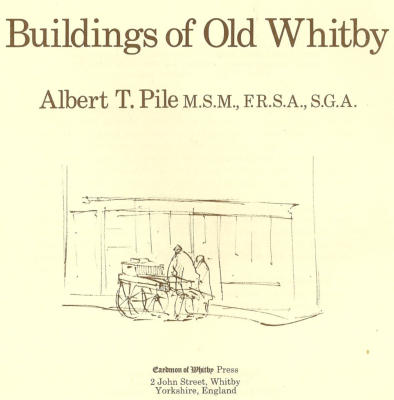Boulby Bank, though a dilapidated and unhealthy place to live, was obviously of interest to some, often being photographed like many parts of Whitby.
Just prior to its demolition a notable artist sketched the dwellings and the sketches were published in a book 'Buildings of Old Whitby'.
Jane Wilkinson died in Whitby in the fourth quarter of 1853. John Wilkinson died just a few months later in Jan 1854, again in Whitby. These need to be
confirmed.
Historical Context (Generated by AI on MyHeritage website)
John
Frankland
entered
the
world
around
1775,
a
period
marked
by
the
early
rumblings
of
the
Industrial
Revolution
in
Britain.
Yorkshire,
his
birthplace,
was
on
the
cusp
of
significant
transformation
as
agrarian
lifestyles
began
to
give
way
to
industrialization
and
urbanization.
The
late
18th
century
also
saw
the
American
Revolutionary
War
(1775-1783),
which
led
to
the
independence
of
the
Thirteen
Colonies
from
British
rule.
When
John
married
Jane
Chapman
in
the
late
18th
century,
England
was
experiencing
the
effects
of
the
French
Revolution
(1789-1799)
and
later
faced
the
Napoleonic
Wars
(1803-1815).
These
events
would
have
influenced
the
socio-political
climate
during
the
early
years
of
their
marriage.
Their
daughter
Amelia's
birth
in
1811
occurred
just
before
the
end
of
the
Luddite
protests
(1811-1816),
where
textile
workers
destroyed
weaving
machinery
as
a
form
of
protest
against
the
changes
brought
by
the
Industrial
Revolution.
By
1851,
when
John
was
recorded
living
at
Boulby
Bank,
Whitby,
Queen
Victoria
had
been
on
the
throne
for
over
a
decade,
marking
an
era
of
British
global
dominance
and
further
industrial
advancement.
The
Great
Exhibition
of
1851
showcased
Britain's
industrial
achievements
and
imperial
power.
John's
death
in
1854
came
just
two
years
after
the
start
of
the
Crimean
War
(1853-1856),
reflecting
a
time
of
both
national pride and international conflict








